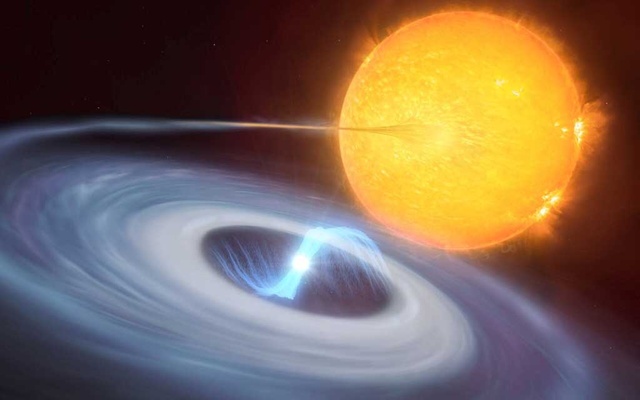Astronomers studying developments in deep space have come across a previously unknown explosion in white dwarf stars that siphoned material from a companion star. Dubbed Micronovae, the stellar explosion could change the understanding of how eruptions occur in stars.
Micronova is a thermonuclear blast that lasts for just a few hours, making it extremely difficult to observe. However, in the short duration of their existence, these outbursts on the surface of certain stars can burn through a huge amount of stellar material equivalent to around 3.5 billion Great Pyramids of Giza.
The findings, published in the journal Nature, state that fast outflows have been observed in the ultraviolet, with velocities of more than3,500kilometers per second.
Led by S. Scaringi of Durham University in England, the international team of researchers saw the phenomenon in three white dwarfs the remnants of dead stars as they fed in each case on a companion star. The stars were 1,680 light-years, 3,720 light-years, and 4,900 light-years away from Earth. A light-year is the distance light travels in a year, nearly 9.5 trillion kilometers.
The researchers explain that micronovae are extremely powerful, but are small on astronomical scales compared to novae and supernovae, which are extremely bright and have been known about for centuries. Micronovae is observed from Earth as bursts of light lasting about 10 hours.
“The discovery was an unexpected surprise. It goes to show just how dynamic the universe is. These events are fast and sporadic. Finding them requires looking at the right place at the right time,” said astronomer Simone Scaringi of Durham University in England, the lead author of the study.
White dwarfs, among the densest objects in the universe, result from the collapse of a dying star’s core. They have the mass of our sun but are about the size of Earth in diameter. Most stars, including the sun, are destined to end their existence in this way.
Some white dwarfs are part of what is called a binary system, in an orbit with another star. White dwarfs can steal material, mostly hydrogen, from their companion stars if they are close enough to them. As the hydrogen falls onto the very hot surface of the dwarf star its atoms fuse into helium in an explosive fashion.
The team states that the new discovery could lead to more micronovae being found and challenge what we know about how thermonuclear explosions occur in stars.






